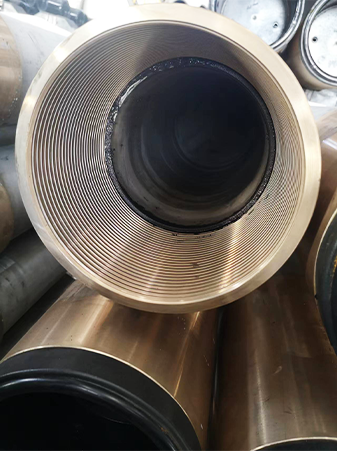- Afrikaans
- Albanian
- Amharic
- Arabic
- Armenian
- Azerbaijani
- Basque
- Belarusian
- Bengali
- Bosnian
- Bulgarian
- Catalan
- Cebuano
- Corsican
- Croatian
- Czech
- Danish
- Dutch
- English
- Esperanto
- Estonian
- Finnish
- French
- Frisian
- Galician
- Georgian
- German
- Greek
- Gujarati
- Haitian Creole
- hausa
- hawaiian
- Hebrew
- Hindi
- Miao
- Hungarian
- Icelandic
- igbo
- Indonesian
- irish
- Italian
- Japanese
- Javanese
- Kannada
- kazakh
- Khmer
- Rwandese
- Korean
- Kurdish
- Kyrgyz
- Lao
- Latin
- Latvian
- Lithuanian
- Luxembourgish
- Macedonian
- Malgashi
- Malay
- Malayalam
- Maltese
- Maori
- Marathi
- Mongolian
- Myanmar
- Nepali
- Norwegian
- Norwegian
- Occitan
- Pashto
- Persian
- Polish
- Portuguese
- Punjabi
- Romanian
- Russian
- Samoan
- Scottish Gaelic
- Serbian
- Sesotho
- Shona
- Sindhi
- Sinhala
- Slovak
- Slovenian
- Somali
- Spanish
- Sundanese
- Swahili
- Swedish
- Tagalog
- Tajik
- Tamil
- Tatar
- Telugu
- Thai
- Turkish
- Turkmen
- Ukrainian
- Urdu
- Uighur
- Uzbek
- Vietnamese
- Welsh
- Bantu
- Yiddish
- Yoruba
- Zulu
Understanding the Role and Applications of Casing Pup Joints in Oil and Gas Industry
Understanding Casing Pup Joints in Oil and Gas Operations
Casing pup joints are essential components in the oil and gas industry, particularly in drilling operations. They serve as short sections of pipe that connect longer casing strings to facilitate various operational functions. In this article, we will explore the significance, applications, and technical specifications of casing pup joints, highlighting their role in enhancing efficiency and safety in drilling operations.
What are Casing Pup Joints?
Casing pup joints are essentially short lengths of pipe, typically ranging from 2 to 10 feet in length, with a standard diameter used in wells. They are designed to adjust the length of casing strings to achieve the desired depth and pressure requirements within a wellbore. Made from high-strength steel, these joints are crucial in ensuring the structural integrity of the casing system while providing flexibility during installation and maintenance operations.
Applications of Casing Pup Joints
1. Depth Adjustment One of the primary uses of casing pup joints is to adjust the length of the casing string during the drilling or completion process. As drillers encounter different geological formations, they may need to customize the casing string's length to optimize well performance.
2. Pressure Regulation Each section of the casing string faces various pressure conditions depending on its depth and surrounding geology. Casing pup joints help in creating a uniform pressure throughout the casing system, thus minimizing the risk of casing failures.
3. Connection Points In many cases, pup joints serve as convenient connection points for various tools and equipment used during drilling or completion. Specialized tools may be attached to the pup joint to perform specific tasks, such as logging or cementing operations.
4. Facilitating Operations During maintenance or repair work, casing pup joints provide access points that facilitate the deployment of additional tools, such as perforators and packers, without needing to remove the entire casing string.
Technical Specifications
casing pup joint

Casing pup joints come in various specifications, tailored to meet specific operational requirements. Some key technical aspects include
- Material Typically constructed from carbon steel, stainless steel, or alloy steel, the choice depends on factors such as the depth of the well, the type of fluids being handled, and the overall environmental conditions.
- Connections Various connection types are available, including butt weld, threaded, and special couplings. The selection of the appropriate connection type often depends on the specific operational requirements and the equipment to be used.
- Pressure Ratings Depending on their applications, pup joints are designed to withstand various pressure ratings. These ratings are crucial in ensuring that the joints can handle the pressure exerted by the fluids in the well without fail.
- Coating To enhance durability and resistance to corrosion, casing pup joints may be coated with specialized protective materials, which prolong their lifespan and maintain integrity within the well environment.
Importance in Safety and Efficiency
The use of casing pup joints significantly impacts both the safety and efficiency of drilling operations. By providing the necessary flexibility in casing lengths, drillers can adapt to unexpected geological changes while ensuring proper pressure control. This adaptability not only simplifies the operation but also reduces the risk of losing well integrity, which could lead to catastrophic failures or costly downtime.
Furthermore, the integration of pup joints into drilling operations has also led to improved safety protocols. By allowing for easier access to various tools and equipment, they streamline the processes involved in well maintenance and repairs, minimizing the time workers spend in potentially hazardous environments.
Conclusion
Casing pup joints play a critical role in the oil and gas industry, facilitating the safe and efficient management of drilling operations. Their ability to provide depth adjustments, ensure pressure regulation, and function as connection points for equipment make them indispensable in modern drilling practices. By understanding their importance and technical specifications, industry professionals can better utilize these essential components to enhance operational efficiency and safety in oil and gas extraction.
-
Tubing Pup Joints: Essential Components for Oil and Gas OperationsNewsJul.10,2025
-
Pup Joints: Essential Components for Reliable Drilling OperationsNewsJul.10,2025
-
Pipe Couplings: Connecting Your World EfficientlyNewsJul.10,2025
-
Mastering Oilfield Operations with Quality Tubing and CasingNewsJul.10,2025
-
High-Quality Casing Couplings for Every NeedNewsJul.10,2025
-
Boost Your Drilling Efficiency with Premium Crossover Tools & Seating NipplesNewsJul.10,2025







